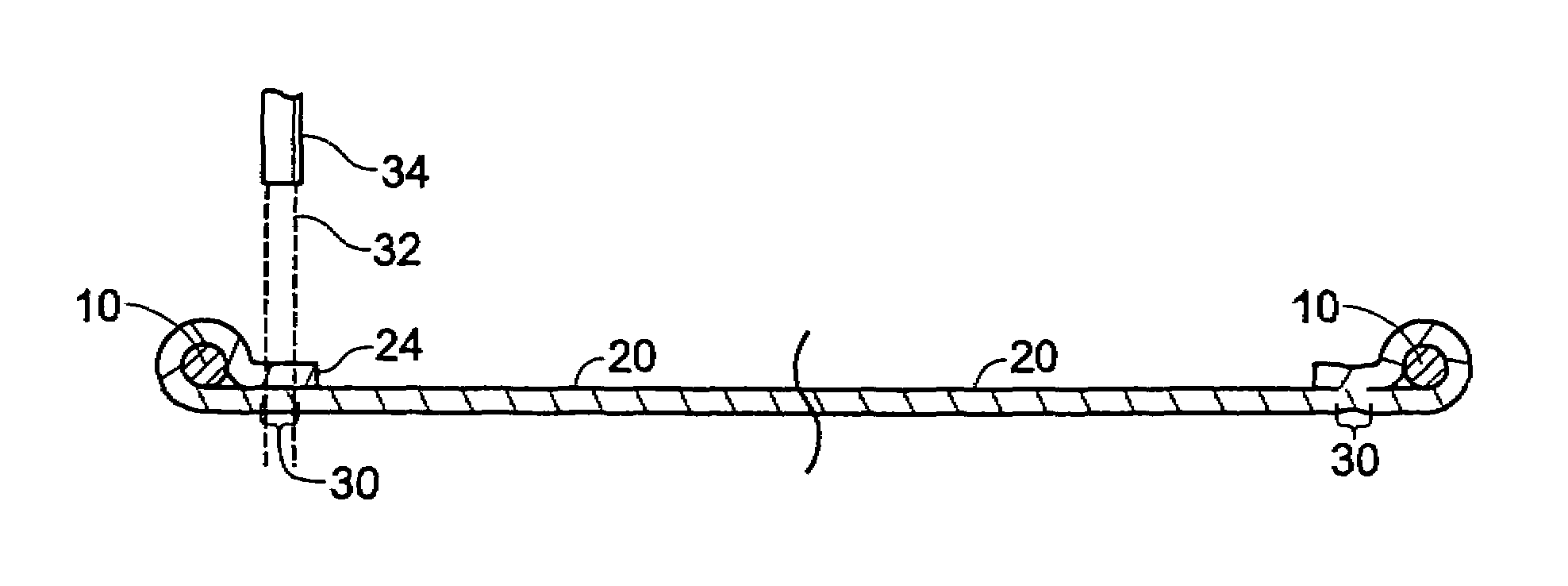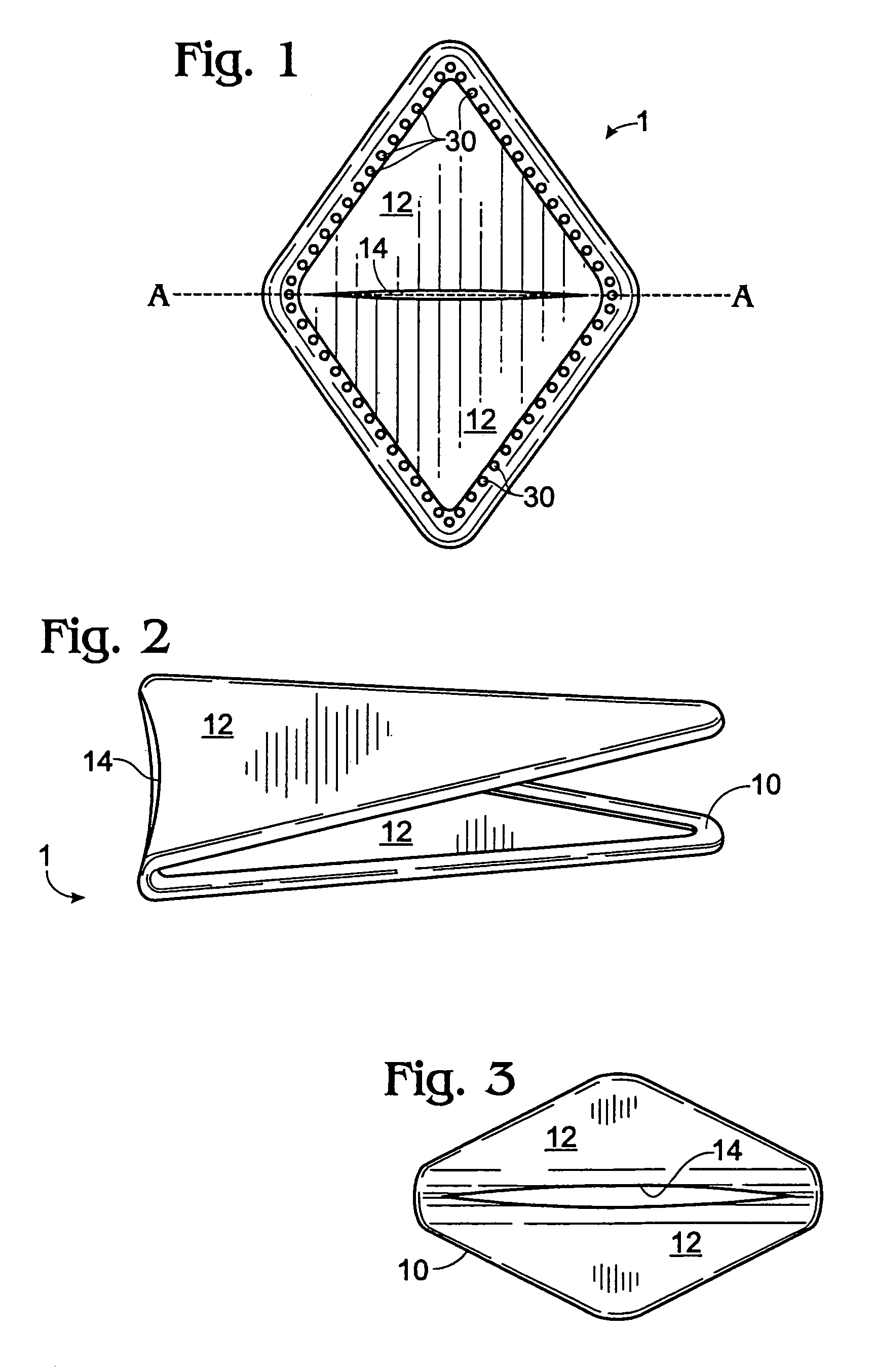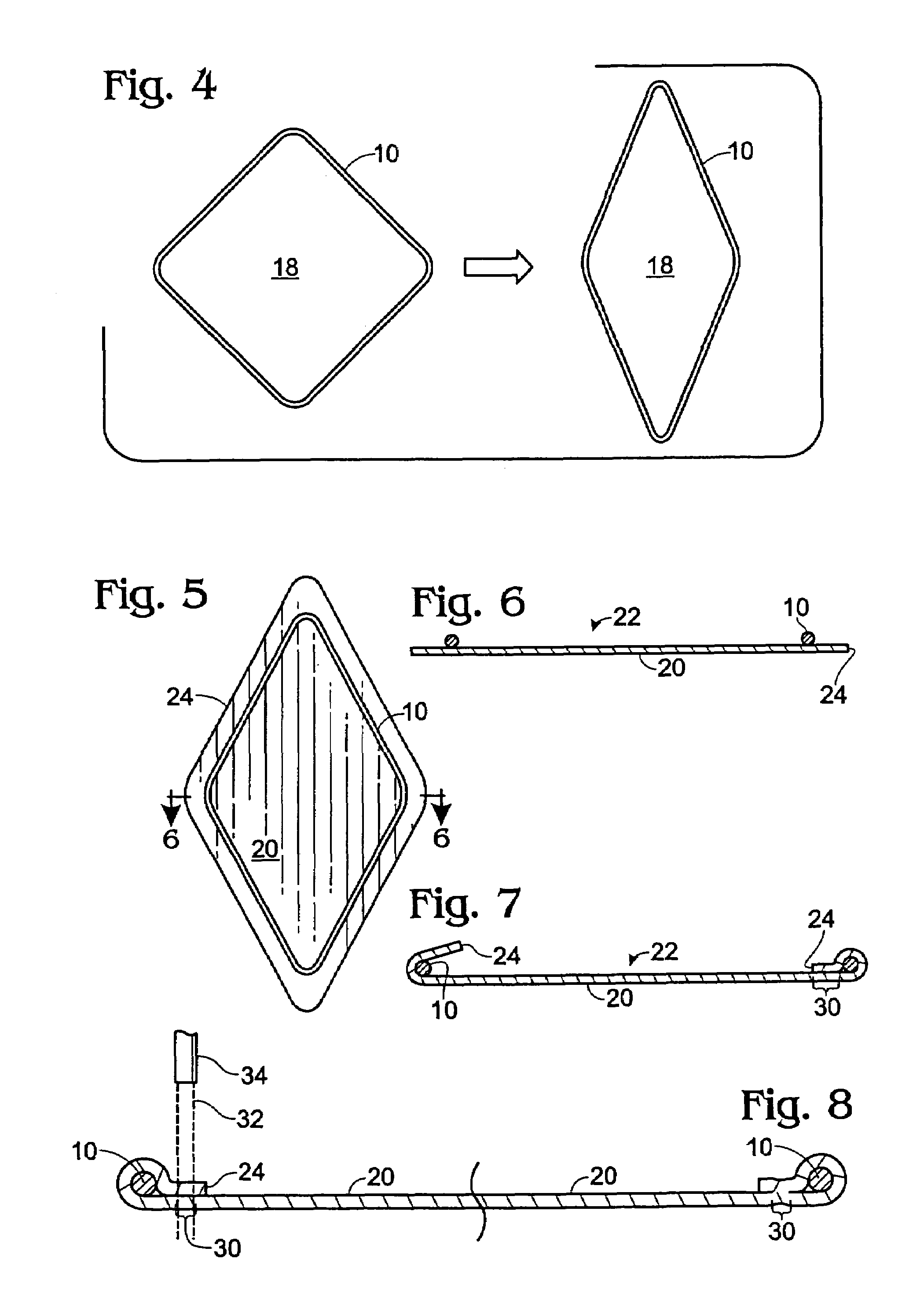Method for suturelessly attaching a biomaterial to an implantable bioprosthesis frame
a biomaterial and frame technology, applied in the field of artificial valves, can solve the problems of multiple sheets being sutured, and the use of such devices is often associated with thrombosis and other complications,
- Summary
- Abstract
- Description
- Claims
- Application Information
AI Technical Summary
Benefits of technology
Problems solved by technology
Method used
Image
Examples
Embodiment Construction
[0031]A valve graft 1 according to the present disclosure is shown in FIGS. 1-3. The valve graft generally comprises a valve frame 10 defining a valve frame open area (18 in FIG. 4). The open area is spanned by a pair of valve flaps 12 constructed of a biomaterial, discussed below. The valve flaps have positioned therebetween an aperture 14.
[0032]The valve frame 10 is preferably a closed loop and is commonly constructed of fine-gauge metal (e.g., 0.014 inch diameter), although other materials can be effectively employed. For example, the valve frame can alternatively be made of a synthetic material such as TEFLON (polytetrafluoroethylene). As well, the valve frame can be fabricated of a resorbable or biodegradable composition.
[0033]In one embodiment, the valve frame 10 is a memory wire formed into a desired shape. As illustrated herein, the valve frame is rhomboidal, although other shapes can be utilized to effect a variety of valve shapes and dimensions.
[0034]Such a shape memory wi...
PUM
 Login to View More
Login to View More Abstract
Description
Claims
Application Information
 Login to View More
Login to View More - R&D
- Intellectual Property
- Life Sciences
- Materials
- Tech Scout
- Unparalleled Data Quality
- Higher Quality Content
- 60% Fewer Hallucinations
Browse by: Latest US Patents, China's latest patents, Technical Efficacy Thesaurus, Application Domain, Technology Topic, Popular Technical Reports.
© 2025 PatSnap. All rights reserved.Legal|Privacy policy|Modern Slavery Act Transparency Statement|Sitemap|About US| Contact US: help@patsnap.com



